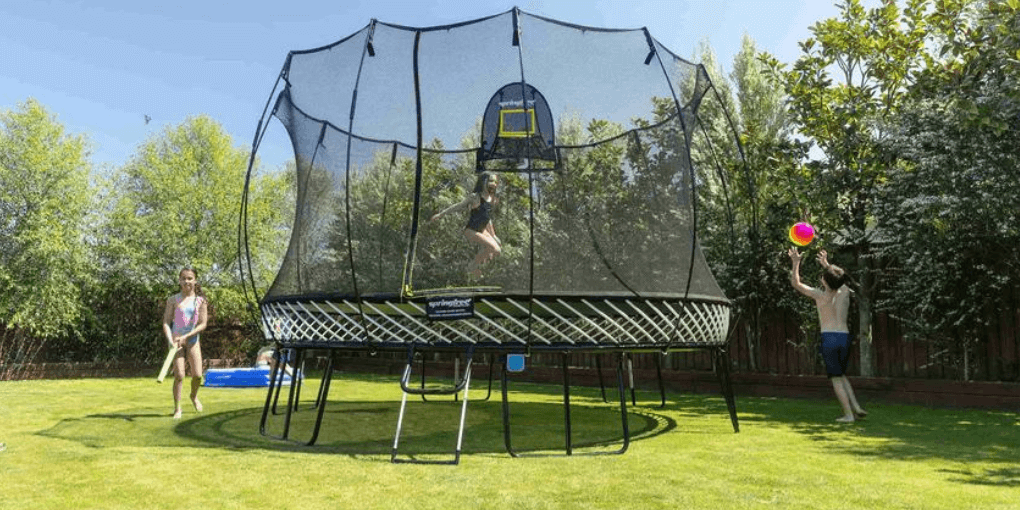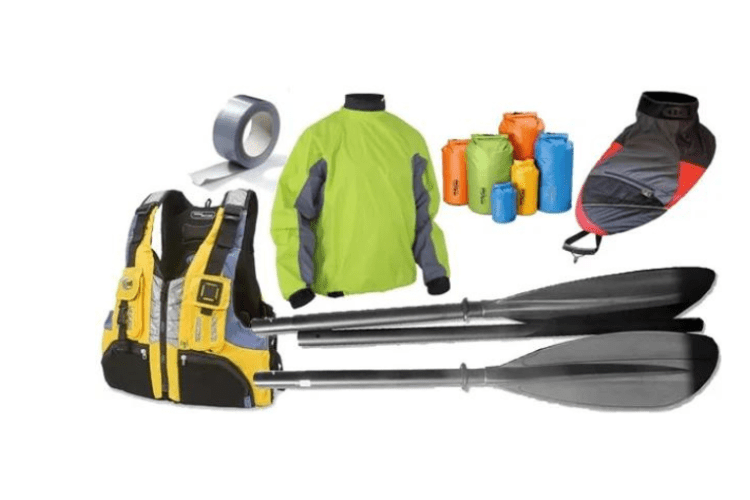110 Advanced Trampoline Advice to Enhance Your Knowledge
Are you ready to become trampoline pros? I’ve got trampoline advice and tricks to share with you, straight from trampoline expert, Sarah Summer

Sarah is a trampoline enthusiast who loves to bounce, flip, and twist her way to fun and fitness. With her expert advice, you’ll be soaring through the air in no time!
So, gather round and get ready to learn some super cool trampoline tips from the one and only Sarah Summers!
It’s time to elevate your trampoline game and have a blast while doing it! Let’s bounce!
Types of Trampoline
There are several types of trampolines available, each designed for different purposes and preferences. Here are some common types of trampolines:
- Round Trampolines: These trampolines are a popular choice for backyard fun. They have a circular shape and provide a nice, even bounce.
- Rectangular Trampolines: These trampolines are great for kids who want to practice tricks and flips. They give a higher bounce and more control for advanced jumping.
- Oval Trampolines: Oval trampolines combine the features of round and rectangular trampolines. They are a good option if you want a bit of everything.
- Square Trampolines: Square trampolines are similar to rectangular ones but have a different shape. They are good for smaller spaces and still offer a good bounce.
- Mini Trampolines (Rebounders): Mini trampolines are small and low to the ground. They are perfect for indoor use and can be used for fun bouncing or exercise.
- Water Trampolines: Water trampolines float on water and are lots of fun to jump on in the pool, lake, or ocean. They are perfect for summer water play.
- In-ground Trampolines: These trampolines are installed at ground level in the backyard. They are safer because they are closer to the ground and blend in with the yard.
Trampoline Advice for All types of People
Trampolines can be a lot of fun, but it’s important to stay safe while using them. Here are some tips to help you have a great time bouncing around:
Round Trampolines
Round trampolines are popular for their even bounce. They are great for backyard fun and safe jumping experiences for kids. Here are I added some advices. Let’s read…
How to Install Round Trampolines
- Choose a suitable location with enough space and a flat surface.
- Lay out all the trampoline parts and tools for easy access.
- Follow the manufacturer’s instructions step by step for.
- Attach the springs carefully and evenly around the frame.
- Ensure the safety enclosure is properly installed and secured.
- Test the trampoline before use to ensure stability and safety.
How to Jump Round Trampolines
- Start by standing in the center of the trampoline.
- Bend your knees and jump straight up and down.
- Keep your arms close to your body for balance.
- Land softly on the trampoline with bent knees.
- Avoid jumping too close to the edges to prevent falls.
- Practice different jumps and have fun while staying safe.
How to Maintenance Round Trampolines
- Regularly inspect the trampoline for any signs of wear and tear, such as rusty springs or torn padding.
- Clean the trampoline surface and frame with a mild detergent and water to remove dirt and debris.
- Tighten any loose screws or bolts to ensure the trampoline remains sturdy and safe.
- Check the safety enclosure and netting for any holes or damage, and repair or replace as needed.
- Lubricate the springs and joints to prevent squeaking and ensure smooth bouncing.
- Remove any excess leaves or debris from around the trampoline to prevent damage and maintain cleanliness.
How to Store Round Trampolines
- Disassemble the trampoline following the manufacturer’s instructions.
- Clean and dry all parts thoroughly before storing to prevent mold and rust.
- Store the trampoline parts in a dry and well-ventilated area, away from direct sunlight and moisture.
- Use a trampoline cover or tarp to protect the parts from dust and debris.
- Ensure all smaller parts are organized and stored together to avoid misplacement.
- Check the stored trampoline periodically for any signs of damage or pests.
Rectangular Trampolines
Rectangular trampolines feature a longer and narrower shape compared to round ones.
They provide more consistent bounce across the entire surface, making them preferred by gymnasts and those focused on precise jumping techniques and tricks.
How to Install Rectangular Trampolines
- Position the frame pieces according to the assembly instructions.
- Connect the frame sections securely using the provided hardware.
- Attach the jumping mat to the frame, ensuring it is centered and secure.
- Install the springs, making sure they are properly attached to the mat and frame.
- Double-check all connections and make any necessary adjustments before allowing use.
How to Jump Rectangular Trampolines
- Begin at the center of the trampoline.
- Bend your knees and jump up.
- Keep your body and arms aligned to maintain balance.
- Land carefully on the trampoline, knees slightly bent.
- Perform various jumps with control and coordination.
- To avoid falls, don’t jump too close to the edge.
How to Maintenance Rectangular Trampolines
- Inspect the trampoline on a regular basis for signs of wear and tear, such as ripped padding, loose springs, or damaged frame elements.
- To remove dirt and debris from the trampoline surface, mat, and frame, use a light detergent and water solution.
- Tighten all loose screws and nuts to keep the trampoline sturdy and safe.
- Inspect the safety cage and netting for tears or damage, and repair or replace as necessary.
- Lubricate the springs and joints to minimize squeaking and ensure a smooth bounce.
- Remove any rubbish from around the trampoline to prevent damage and keep it clean.
How to Store Rectangular Trampolines
- Disassemble the trampoline using the manufacturer’s directions.
- Clean and dry all parts thoroughly before storage.
- Organize and label parts for easy reassembly.
- Choose a dry, well-ventilated storage location away from sunlight and moisture.
- Use a trampoline cover or tarp to protect parts from dust and debris.
- Avoid placing heavy items on top of stored trampoline parts.
- Periodically inspect stored parts for damage, wear, or pests.
Oval Trampolines
Oval trampolines combine the benefits of both round and rectangular designs, offering ample space and a consistent bounce.
They suit various users and provide versatility for recreational jumping and moderate tricks.
How to Install Oval Trampolines
- Ensure that the installation area is free of debris and impediments.
- Lay out all of the parts and tools required for assembly.
- Follow the manufacturer’s directions step by step.
- Connect the frame sections using the specified recommendations.
- Arrange the springs equally around the frame and jumping mat.
- Install the safety enclosure securely.
- Before using the trampoline, make sure it is stable enough.
How to Jump Oval Trampolines
- Begin at the center of the trampoline.
- Bend your knees and jump up.
- Keep your body and arms aligned to maintain balance.
- Land carefully on the trampoline, knees slightly bent.
- Practice varied jumps while maintaining control and coordination.
- To ensure your safety, avoid jumping too near to the edge.
How to Maintenance Oval Trampolines
- Regularly inspect the frame, springs, and mat for any damage.
- Clean the surface with a gentle soap and water.
- Ensure that all components are securely fastened.
- To avoid damage, clear away any snow or debris.
- Lubricate springs and joints as needed.
How to Store Oval Trampoline
- To disassemble the oval trampoline, remove the springs, jumping mat, frame, and safety enclosure.
- Clean all trampoline components thoroughly with a mild soap and water solution.
- Allow the components to thoroughly air dry before storage to avoid mold and mildew formation.
- To preserve the dismantled trampoline pieces from moisture and sunlight, store them in a dry, covered area.
- Keep all trampoline parts organized and together to make future reassembly easier.
- Consider utilizing a trampoline cover to protect against dust, debris, and weather conditions while in storage.
Square Trampoline
Square trampolines provide a spacious jumping area with even tension on the springs.
They offer stability and control for various activities. Their symmetrical design suits both recreational bouncing and advanced tricks.
How to Install Square Trampolines
- Choose a level area in your yard, free from obstacles.
- Clear the ground of debris and ensure adequate space around the trampoline.
- Assemble the frame according to the manufacturer’s instructions.
- Place the trampoline mat in the center of the frame.
- Attach the springs evenly around the frame to secure the mat.
- Install the safety enclosure if included, following assembly guidelines.
- Check all connections and springs for stability and security.
How to Jump Square Trampolines
- Approach the trampoline from the side and step onto the center of the mat.
- Keep your feet shoulder-width apart to maintain balance and stability.
- Bend your knees slightly to absorb the impact as you start bouncing.
- Swing your arms gently to help propel yourself upward.
- Begin with small bounces to get a feel for the trampoline’s responsiveness.
- Experiment with different movements such as twists, tucks, or pikes.
- Stay centered on the trampoline to avoid bouncing into the frame or safety enclosure.
- Be mindful of others jumping and give each other plenty of space to avoid collisions.
How to Maintenance Square Trampolines
- Regularly clean the mat surface and frame to remove debris and prevent deterioration.
- Inspect the frame, springs, and safety enclosure for damage or signs of wear.
- Replace any damaged or worn-out springs, padding, or safety enclosure netting.
- Ensure the anchor system is secure and properly installed to prevent tipping.
- Use weather protection measures such as covers during inclement weather.
- Follow manufacturer guidelines for maintenance and inspection schedules.
- Conduct periodic safety checks to ensure all components are in good condition.
- Tighten any loose bolts or screws and repair any rust or corrosion on the frame.
- Store the trampoline properly during periods of non-use to prolong its lifespan.
How to Store Square Trampolines
- Disassemble the trampoline according to the manufacturer’s instructions.
- Clean the frame, mat, springs, and other components thoroughly.
- Ensure all parts are completely dry to prevent mold or mildew growth.
- Store the disassembled trampoline in a clean, dry, and well-ventilated area.
- Use a weather-resistant cover to protect the trampoline from dust, moisture, and sunlight.
- Store smaller components such as springs, screws, and nuts in labeled containers.
- Keep the storage area free from pests by using appropriate pest control methods.
- Avoid placing heavy objects on top of the stored trampoline to prevent damage.
- Check the storage area periodically for any signs of moisture or pest infestation.
Water Trampolines
Water trampolines are inflatable or buoyant platforms designed for bouncing on water surfaces.
They feature durable materials and are often equipped with safety features like soft edges and secure anchoring systems.
Water trampolines provide endless fun for families and groups. It offers a unique way to enjoy lakes, ponds, and other water bodies while staying active and entertained.
How to Install Water Trampolines
- Choose a suitable area in the water, free from obstacles and shallow areas.
- Unpack the water trampoline and lay it out on the surface of the water.
- Inflate the trampoline using an air pump, ensuring it reaches full capacity.
- Secure the trampoline in place using anchor ropes or weights.
- Double-check the stability and positioning of the trampoline.
- Attach any additional features such as ladders or safety nets.
- Test the trampoline’s buoyancy and stability before use.
How to Jump Water Trampolines
- Approach the water trampoline from the side and step onto the surface gently.
- Maintain balance by keeping your feet shoulder-width apart.
- Bend your knees slightly to absorb the impact as you bounce.
- Use your arms for balance and propulsion while jumping.
- Enjoy the exhilarating feeling of bouncing on the water trampoline!
How to Maintenance Water Trampolines
- Regularly inspect the trampoline for any signs of damage or wear.
- Clean the surface of the trampoline with mild soap and water to remove dirt and debris.
- Check the inflation levels regularly and reinflate if necessary to maintain buoyancy.
- Securely anchor the trampoline to prevent drifting or movement in the water.
- Store the trampoline properly when not in use to prevent damage from exposure to the elements.
- Repair any punctures or tears in the trampoline material promptly using a patch kit.
How to Store Water Trampolines
- Thoroughly clean the water trampoline to remove any dirt, debris, or algae.
- Allow the trampoline to dry completely to prevent mold or mildew growth.
- Deflate the trampoline and fold it neatly for compact storage.
- Store the deflated trampoline in a cool, dry, and well-ventilated area.
- Avoid storing the trampoline in direct sunlight or extreme temperatures.
- Consider using a storage bag or container to protect the trampoline from dust and damage.
- Periodically check the stored trampoline for any signs of damage or deterioration.
Common Mistakes to Avoid
Trampolines are tons of fun, but it’s super important to be safe while bouncing around. Let’s learn about some common mistakes to avoid so we can have the best time ever!
Too Many Jumpers
- Mistake: Having too many friends on the trampoline at once can be dangerous.
- Fix: Stick to one jumper at a time to avoid collisions and injuries.
Jumping Near the Edge
- Mistake: Bouncing too close to the edge can lead to falling off.
- Fix: Always stay in the middle of the trampoline to stay safe and avoid accidents.
No Supervision
- Mistake: Jumping without an adult around can be risky.
- Fix: Make sure a grown-up is nearby to watch and help if needed.
Trying Tricks Without Practice
- Mistake: Attempting fancy flips and tricks without practice can lead to falls.
- Fix: Practice new moves on the ground first and then try them on the trampoline with caution.
Ignoring Safety Rules
- Mistake: Forgetting to follow safety rules can result in accidents.
- Fix: Always remember to follow the rules like no somersaults and no jumping off the trampoline.
Not Checking for Damage
- Mistake: Using a trampoline with broken parts can be dangerous.
- Fix: Before jumping, check the trampoline for any tears, holes, or loose springs, and ask an adult to fix them.
Jumping in Bad Weather
- Mistake: Bouncing on a wet or windy day can lead to slips and falls.
- Fix: Wait for sunny and calm weather before jumping on the trampoline.
Finally…
Now that you’ve learned all about trampoline advice, you’re ready to bounce with confidence and excitement!
Remember to always follow safety rules, listen to grown-ups, and have fun while jumping.
So, grab your friends, head to the trampoline, and let the bouncing adventures begin! Don’t forget to stay safe and enjoy every moment of your trampoline fun!


